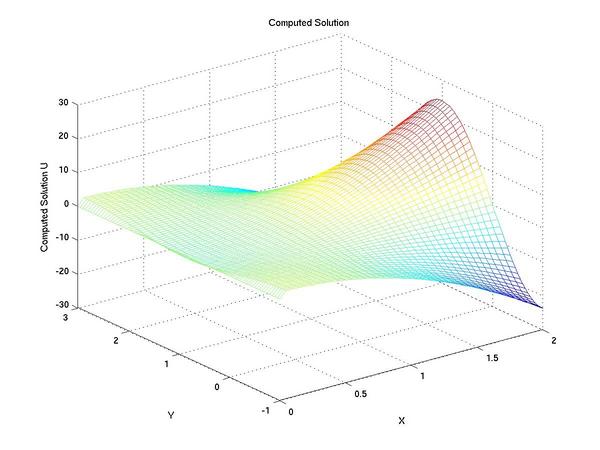Solving the 2D Cartesian Helmholtz Equation with Octave (Example 1)
Consider the following equation:

Defined on a Cartesian grid say [0,2]x[-1,3]. With boundary
conditions given by

and

This is an inhomogenous Helmholtz equation with an exact solution
given by

To solve this with "hwscrtg" is really quite simple. The limits
of the Cartisian domain ([0,2]x[-1,3]) are supplied in the
variables A,B,C, and D. The number of cells to decompose each
domain (for the finite difference grid) are denoted M for
x-dimension and N for the y-dimension. One is required to compute
vectors representing each (non-periodic) boundary condtion and
assign them to arrys that are passed in to the code. The arrays
are denoted BDA, BDB, BDC, and BDD depending on the boundary at
which the boundary conditions are specified (e.g. BDA corresponds
to Dirchlet or Neumann boundary conditions on u(x=A,y)). It may
be simpler to show an
example driver function.
Finally we can view the results of our hard work. First we
plot the numerical solution obtained with the octave code

Next, we plot the difference between our numerically computed solution and
the known exact solution given above

Since the magnitude is of order 1e-4, from this plot we can
conclude that our implementation is working. To further test that
the code is converging at the right rate we next plot the L^{\infty}
error as a function of the grid spacing. The code to produce this
plot is found
here
John Weatherwax
Last modified: Fri Jul 14 04:07:38 EDT 2006






